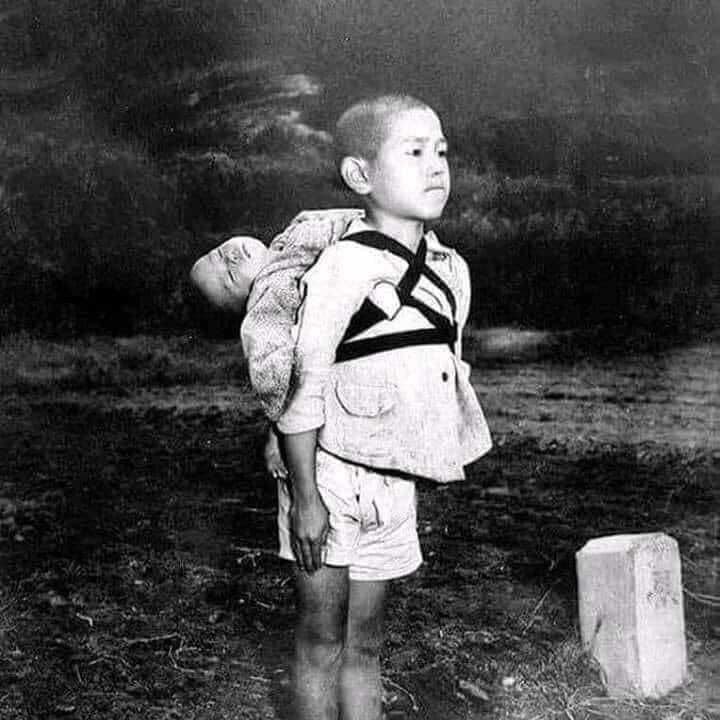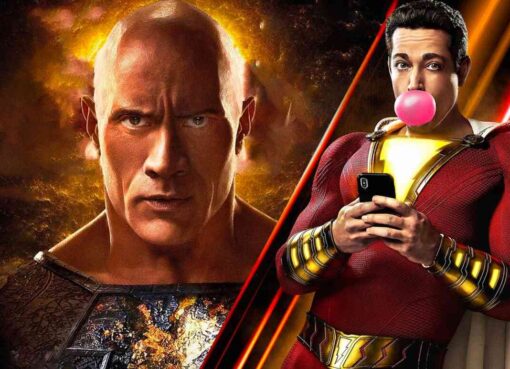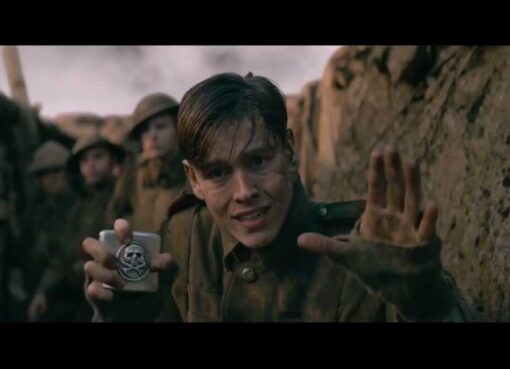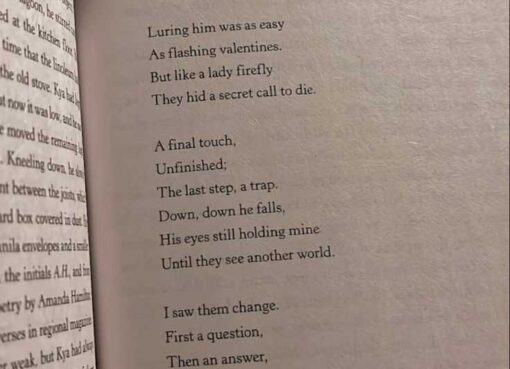This heartbreaking photo was taken in 1945 after the nuclear bomb explosion in Nagasaki, Japan. In the picture, the boy is standing on his back with the body of his younger brother, who died during the explosion. Where the boy was standing was a makeshift cemetery outside the city where crematory arrangements were being made for all those who died during the blast. The boy stood there so that his brother could be cremated.
This historic photograph is known as The boy standing by the crematory; alternatively “The standing boy of Nagasaki”. The photograph was taken by Joe O’Donnell in Nagasaki, Japan, in September of 1945, shortly after the atomic bombing of that city on August 9, 1945.
I saw a boy about ten years old walking by. He was carrying a baby on his back… I saw that the baby was already dead. The men held the body by the hands and feet and placed it on the fire. The boy stood there straight without moving, watching the flames. He was biting his lower lip so hard that it shone with blood. The flame burned low like the sun going down. The boy turned around and walked silently away.
Joe O’Donnell
O’Donnell made personal copies of his Nagasaki photographs and kept them hidden in a trunk until 1989, when he put together a traveling exhibit and a book.
Interesting fact
There is a misinformation floating around the internet: the movie Grave Of The Fireflies is based on this incident. Not really. This incident bears some resemblance to another true story on which the movie Grave of the Fireflies was based.
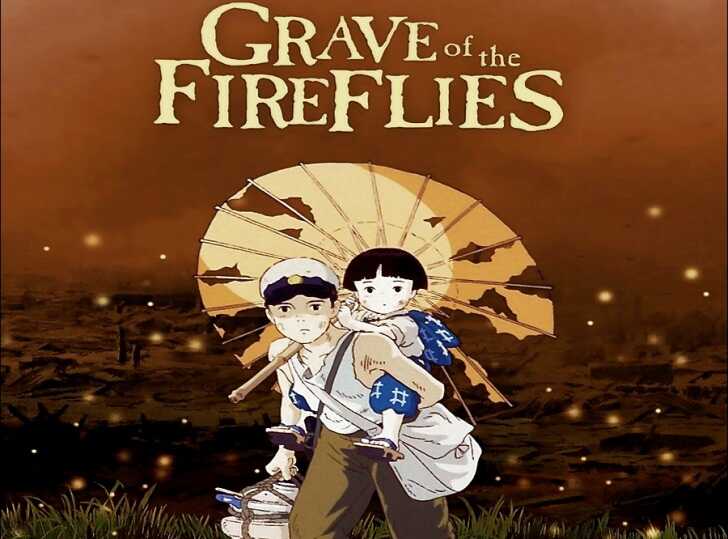
The 1988 Japanese film “Grave of the Fireflies” is a tragic film based on the struggle of a young boy and his younger sister to survive in Japan during World War II.
Grave of the Fireflies true story
The movie is based on the short story Grave of the Fireflies, written by Akiyuki Nosaka, who lived through the bombing of Kobe while he was a child. It is based on his experiences before, during, and after the firebombing of Kobe in 1945.
Due to the war, Nosaka experienced a series of losses that marked his early life. As a young teenager, the writer’s own life closely paralleled the heart-wrenching events depicted in the classic film. Nosaka was adopted by his aunt after his mother died during childbirth. Like Seita, the protagonist of the movie, the writer also had a younger sister during the tumultuous period of war. He had two sisters. One of his sisters died as the result of sickness, his aunt was terribly wounded during the bombing of Kobe in World War II and his adoptive father died by the bombs.
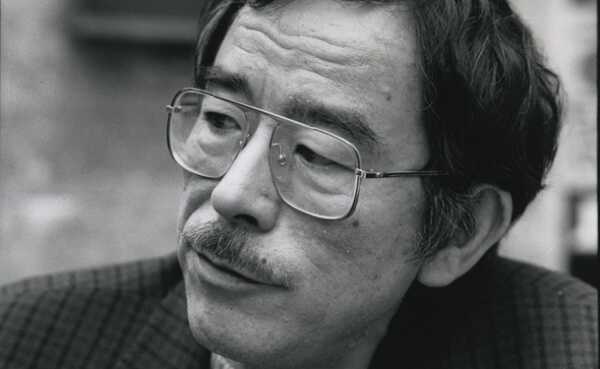
Undoubtedly, the most heartbreaking loss that Nosaka endured was the death of his younger sister. His younger adopted sister, Keiko, died of malnutrition in Fukui. Tragically, she was just an infant when Nosaka was a teenager, and she succumbed to starvation before reaching 16 months of age. The weight of guilt over his sister’s passing continued to haunt the writer even decades later. In contrast to the portrayal of Seita’s kindness towards his sister in the movie, the reality of Nosaka’s experience was different. He felt responsible, blaming himself for not doing enough as he consumed food that he believed he should have shared with her. At 14 years old, he didn’t know much about taking care of an infant. He wrote the short story as a personal apology to Keiko for her death.
Usually, when we think of animation movies, the common image that comes to mind is a fun movie made for kids. It was Takahata who showed the courage to make such a film by subverting that conventional idea. In this context, critic Roger Ebert said, “Grave of the Fireflies forces a rethinking of animation.”
Japanese-American writer Roland Kelts wrote about the characters in this film in his book ‘Japanamerica’-
“It tells about the failure of heroism and nobility in desperate circumstances, and in that way, it’s almost an anti-Hollywood film. Hollywood will have you believe that heroes are needed when times are tough. Isao Takahata shows us the humble opposite: that when times are tough, what you need most is humility, patience, and self-restraint. That’s how one survives.“
This is one of the best movies I have ever seen. Those who haven’t seen it yet, must watch it.

